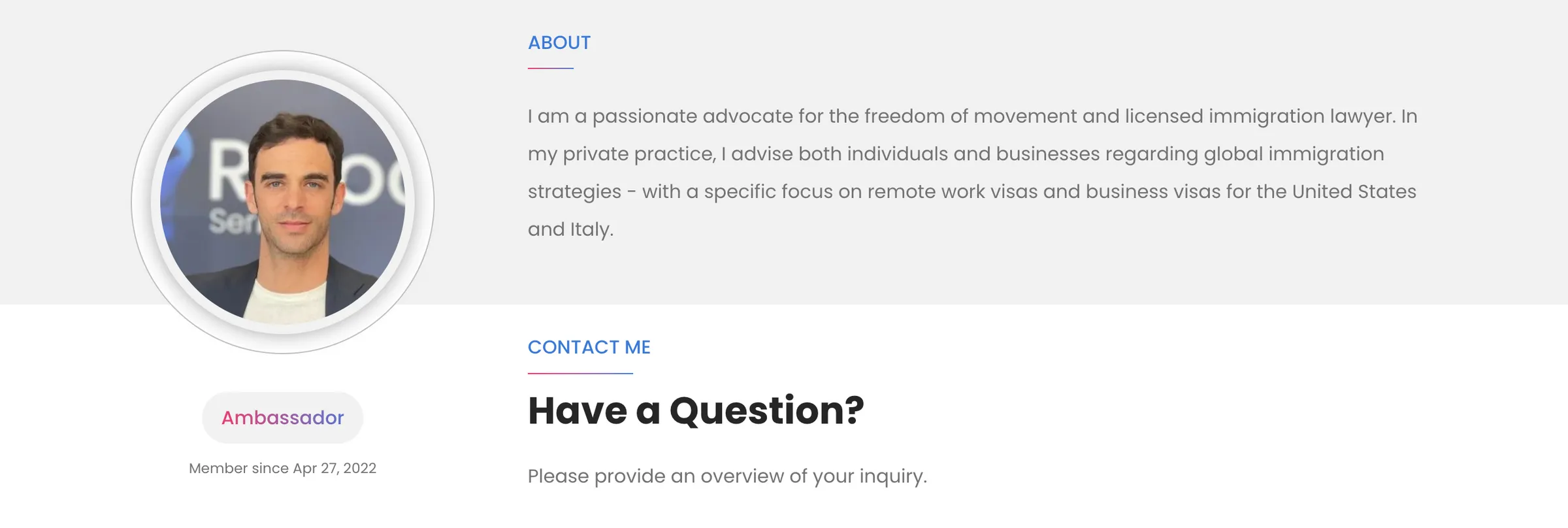Navigating immigration solutions for foreign nationals seeking to live and work in the United States is complicated. Beyond the practical challenges of sorting through actual visa categories and determining the most suitable strategy for foreign talent, the United States immigration framework is limited. It is plagued with “catch-22” scenarios, including the most troublesome: My employer will only hire me if I have a visa / I can only get a visa if my employer sponsors me.
The robust economy of the United States is inextricably woven with its reliance on global talent. Without immigrants. Without global talent. The United States would not be what it is today. The present shortfalls of the United States immigration framework threatens not only its economic prosperity, but also the very constitutional foundation of America’s vision for itself.
Demand for Science, Technology, Engineering and Math (STEM) Professionals
Core to national innovation, health and the overall prosperity of any country is the ability to attract and retain global talent. Skills and knowledge are key ingredients to any macroeconomic engine that competes on a global scale. And all countries compete on a global scale, using geopolitical levers to attract enterprises and individuals within their borders. These foreign policies can range from fiscal (i.e. tax incentives) and immigration (i.e. visa pathways) frameworks to cultural and social foreign policies. Understandably, these usually involve numerous and complex stakeholders.
Like many other countries around the world, the United States recognizes the importance of attracting key global talent. Afterall, there are underlying economic motivations that are part of any national self-interest. Yet despite all of this, reports demonstrate that the United States will need to fill nearly 3.5 million STEM jobs by 2025. This staggering statistic represents a real threat for the United States to remain a global innovator. Furthermore, as countries throughout the world provide innovative, turn-key incentives and pathways to attract and retain global talent, the future of work is changing fast.
Gaps for Attracting and Retaining Global Talent in the United States
The United States offers several immigration pathways aimed at foreign nationals within STEM and business professions. Some begin while foreign nationals are still at University, such as the Optional Practical Training (OPT) program that enables STEM-based degree-holders to effectively extend their stay in the United States. This bridges into an array of work-related visas, including one of the most high-demand visa categories, the H-1B specialty occupation visa – a ripe example of a weathered immigration solution that puts the U.S. at a disadvantage.
Yet, despite boasting nearly a dozen immigration pathways for STEM professionals to work in the United States, the shortage of global talent for filling critical positions in the United States prevails. This is due to a myriad of factors, starting from a lack of “real-world” training for students to the inability for innovative U.S. companies to actually hire and retain foreign employees due to a lack of viable visa solutions.
Recent reports demonstrate that the trends are only getting tougher. In March 2023, employers submitted more than 780,000 registrations for new H-1B visas—a 61% increase from the prior year. With 85,000 visas available on an annual basis, this means that an applicant has a 1/9 chance within the lottery system.
The future of work clearly demonstrates that global mobility requires an agile approach. Companies no longer need to maintain an operationally heavy global workforce, and the achievements of freshly minted start-up enterprises can achieve breakthrough successes in STEM areas just as much as Fortune 500 companies. U.S. immigration paradigms are aged and outdated, neither welcoming nor prepared for what is on the horizon.
Future of Work in the United States for Global Talent
Indeed, with the advance of remote work, many are looking overseas. Individuals seeking a higher quality of life, lower cost of living and overall change of scenery now have the potential to live and work remotely in unprecedented ways. Since 2019, over 45+ countries have provided remote work visa pathways. In 2023, nearly 9.5 million U.S. citizens decided to move abroad with their laptop and work elsewhere. This statistic does not include the amount of foreign national (i.e. non-US) workers who opted to take advantage of working remotely in another country for a U.S. employer.
On one hand, this advancement can be seen as a positive attribute. U.S. companies are still benefiting from global talent work-product, even if that “employee” is not on U.S. soil. For STEM professions, one might argue that this logic also applies, as these professionals can still obtain work opportunities for a U.S. company without the need to live and work within the United States. Yet on the other hand, this can be seen as just another macro catch-22 scenario – one that will ultimately harm the United States. One of the major reasons for the hypergrowth of remote work visas is to attract a desirable demographic of economic spending power. So gainfully employed workers, earning a U.S. salary, will no longer be spending their income within the United States – rather they will be shopping at local markets in Madrid, or buying a home in Bali.
From a global economic lens, this distribution of wealth and earnings is a positive. Yet, it still does not resolve the practical challenges that innovative STEM professionals and companies face if they want to actually hire and retain talent in the United States. Afterall, not all human resource professionals feel that remote-work is the future. Many have opted for a hybrid approach, and still, many employees prefer the benefits from in-person working cultures.
Overall, there are growing concerns about the ability for the United States to attract and retain foreign talent. There are real shortages in the labor force for skill-based, STEM professionals. Still, despite the restrictions in the immigration framework, innovative companies are still finding ways to meet growing demands and reduce these shortages. One contemporary model for a viable visa solution can be found in the non-profit, Open Avenues Foundation, which hires foreign national talent for 5-8 hours per-week under a H-1B cap exempt policy to train and mentor STEM students. By working with stakeholders across the global mobility spectrum – from students and universities to employers and practitioners – Open Avenues addresses gaps in the current U.S. immigration framework, thus bolstering the potential for innovation in the United States.
While this is no small achievement, there is still a long way to go. Without structural changes to the U.S. immigration framework, a pressing need for timely and innovative global mobility solutions is tantamount.
David is a global immigration lawyer and passionate advocate for the freedom of movement.







